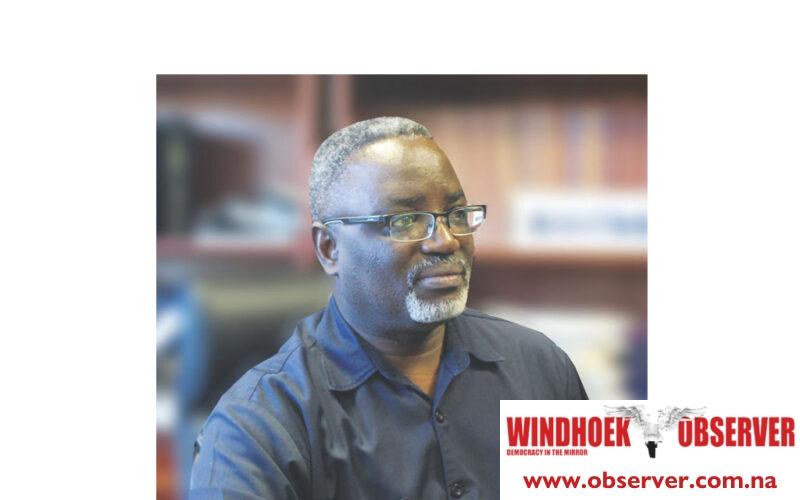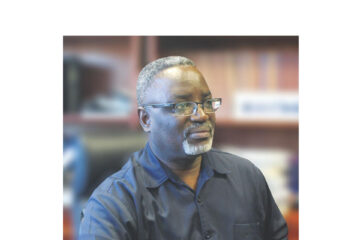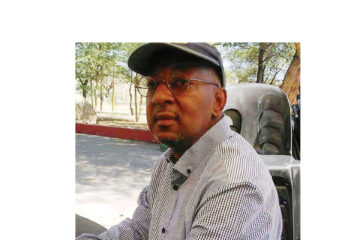PAUL T. SHIPALE
Though we live in an era of relative peace and comfort, we have settled into a mood of pessimism about the long-term future, fearful that our world and our nations are somehow rotting from within. Not even the end of the COVID-19 pandemic could buoy our public spirit. Wherever we look, we see paths to a foreboding future. We yearn for civic character but only satisfy ourselves with symbolic gestures.
We perceive our civic challenge as some vast, insoluble Rubik’s Cube. Behind each problem lies another problem that must be solved first, and behind that lies yet another, and another, ad infinitum. There’s no fulcrum on which to rest a policy lever. People of all ages sense that something huge will have to sweep across the world before the gloom can be lifted–but that’s an awareness we suppress. As we’re in deep denial.
While we grope for answers, we wonder if analysis may be crowding out our intuition. We find it hard to stop and ask, What is the underlying malady really about? Wherever we’re headed, the world is evolving in ways most of us don’t like or understand. Individually focused yet collectively adrift, we wonder if we’re heading toward a waterfall. The question is; Are we? We should not despair as it’s all happened before.
With trail-blazing originality, William Strauss and Neil Howe change the way we see the world—and our place in it. Their book, the Fourth Turning illuminates the past, explains the present, and reimagines the future. Most remarkably, it offers an utterly persuasive prophecy about how the world’s past will predict its future.
Illuminating, sobering, yet ultimately empowering The Fourth Turning Is Here explores how all of us will be differently affected by the political, social, and economic challenges we’ll face in the decade to come, probably from 2025 to 2035, and reveal how our countries, our communities, and our families can best prepare to meet these challenges head-on.
Strauss and Howe say like other societies, we follow the saecular cycle, a temporal sequence of a hundred years around the length of a human life span. This corresponds to about the length of one phase of human life, from childhood to elderhood. In miniature, a saeculum is like a year, while a turning is like a season. Altogether, the four turnings of a saeculum comprise its four seasons of growth, maturation, entropy, and decay.
Let’s go into more depth as to what characterizes each of these periods. Winter follows autumn and summer follows spring. Every year, the seasons repeat in the same pattern. You’ll never find winter following summer. In the same way, the Turnings within each saeculum follow a particular pattern every single time they occur.
The pattern begins with a High. You can think of this as the season of spring. A High always follows a Crisis, which is like winter. For instance, the fact that the Crisis has ended means that the nation’s mood is now upbeat and triumphant. Government is powerful and effective, the gap between rich and poor narrows, productivity grows, the economy prospers, and society, in general, becomes more community-minded. On the other hand, Highs are characterized by a conformist culture, with the nation succeeding in public cooperation but failing in personal fulfilment. Additionally, people tend to overlook or ignore injustice, preferring not to rock the boat.
However, this mood can’t last forever. Cracks begin to appear, sounding the opening bell of the second of the saecular seasons – the Awakening. This season is most like summer, oscillating between the extremes of thunderstorms and bright sunshine characterized by a newfound focus on spiritual renewal, inner individual desires, and cultural upheaval. Young adults come to view authority as a force that crushed the individual, the police as an institution that brutalized the poor, and academia as a killer of creativity and when institutions can no longer maintain order, violence and chaos are the result. In Awakenings, both the demand for and the supply of order falls. As a result, people find themselves in an Unravelling, the Turning most similar to the season of autumn.
Indeed, following the authors’ theory, our country witnessed a period of awakening right at the turn of the 20th century with the wars of resistance by our forefathers. This awakening culminated around the mid-fifties followed by the unravelling with the petitioning at the United Nations. Then came the formation of political parties such as OPC, SWANU and OPO, the forerunner of SWAPO followed by the Katutura Uprising on the 10th of December 1959.
This unravelling was followed by the crisis period with the Battle of Omugulugwombashe on the 26 of August 1966, the boycotted Ovamboland Bantustan elections of 1973, the Adoption of the UN Resolution 435 of 1978 followed by the Cassinga Massacre on the 4th of May 1978 until the decisive and historic battle of Cuito Cuannavale. The crisis ended with our High with the Independence of Namibia on the 21st of March 1990 until another awakening occurred with the formation of splinter parties such as the COD, APP and RDP. This season lasted until around 2015 when we entered into a new unravelling season.
During the Unraveling, people’s trust in government falls even lower than in the Awakening. Broad, overarching national narratives are rejected in favour of highly personal ones. Social niching based on sex, race, religion, income, and hobbies begins, causing public opinion to become even more tribal and polarized. As the Unraveling progresses, sparks will begin to fly – perhaps a fiscal crisis, a corruption scandal like the fishrot scandal, or a pandemic. One of these sparks will then catch fire, triggering a chain reaction of responses which will lead to further emergencies. These emergencies would reveal our vulnerabilities in the areas we neglected during the Unraveling.
We have seen this in our country with the new socio-economic challenges that have been occasioned by the global economic downturn, compounded by a period of relentless and devastating drought which was further exacerbated by the outbreak of the COVID-19 pandemic.
As the Crisis period progresses, societal trust would eventually implode. The Crisis would eventually reach a climax, which could involve any number of forms of distress – economic, social, cultural, technological, ecological, political, or even military as we have seen in Mali, Burkina Faso, Chad and Niger in West Africa. Yet, simultaneously, the Crisis era would inspire great leaders to rise to the occasion and give speeches that would be remembered far into the future. New political visions would be forged and framed. A new generation of youths would summon the courage to fight for a communal cause. At the end of the Crisis, trust would be reborn – and a new High would follow.
Indeed, according to the authors, the “season” in which we grow up has an impact on our personality. It’s possible to identify four distinct archetypes – recurring qualities or types of people – that characterize every generation. Each archetype has distinct values, perspectives, and behaviours that result from how history shaped them – and how they, in turn, will go on to shape history. Those archetypes are the Heroes, the Prophets, the Nomads, and the Artists or what I like to call the inventors or creative thinkers.
In Namibia, we have seen another season of the formation of new political parties such as AR, LPM, IPC, and NEFF, including the renaming of the former DTA into PDM, headed by young leaders. Unless the ruling Party SWAPO also brings into its midst or fold of leadership young leaders such as Dr Elijah Ngurare and others, they will face stiff competition from other parties.
According to Antonio Gramsci, an Italian political theorist and activist, one of his most quoted phrases is his 1930 statement in the Prison Notebooks that says ‘the crisis consists precisely in the fact that the old is dying and the new cannot be born; in this interregnum, a great variety of morbid symptoms appear’.
The morbid symptoms (‘fenomeni morbosi’) appear in the interregnum when the old is dying and the new cannot be born. The central idea in Gramsci’s famous sentence belongs to the appraisal of any transitional phase during which an old order is already dying, but a radically different new one is not yet able to be born.
This is precisely what is happening in our country when we were caught off guard by the death of a sitting President while there was no clear succession plan. That is why there were debates surrounding the transition of power to the fourth President of the country and even in the ruling Party.
A first and most fundamental aspect of Gramsci’s thinking on this subject is that he understood crises not as static ‘events’, but as processes. This means, first, that crises are not framed as external shocks or exogenous events that break into a social order. Crises have in this sense a ‘history’, since they originate in contradictions or tensions in the old, dying social order.
Second, if crises are not reducible to single, exogenous events, they represent more than just a single moment separating the old from the new order. They are, rather, long, multidimensional and transformative processes of economic and political insecurity that can last for decades and can develop a ‘life’ of their own. Both points emphasize the centrality of historical accounts in studying this ‘life’ of a crisis.
The second point concerns the distinction between what Gramsci described as ‘conjunctural’ and ‘organic’ crises. Conjunctural crises are those that appear in daily political life; they are usually of a less fundamental nature and, on their own, not system-changing. Only organic crises challenge the very fundamentals on which social orders are built. They produce the ‘morbid symptoms’ that disrupt everyday political and economic life and, in the long run, destroy old societal orders and power relations.
For Gramsci, organic crises are rooted in an alienation of the masses from their political representation, giving rise to a mismatch between ‘represented and representatives’. This in turn leads to a ‘crisis of authority’ that leaves an ideological void and thus the possibility for different crisis solutions. The third point relates to what Gramsci describes as ‘morbid symptoms’. This term is part of his famous definition of crisis of authority:
Drawing on three Gramscian concepts related to crisis – processuality, organicity and morbidity, I argue that these elements capture conceptually three dimensions that are crucial to a comprehensive understanding of what transpired at the just concluded SWAPO Party’s Central Committee. On one hand, we understand that such a crisis is not a static ‘event’, but is a process that has a history of its own, originating in contradictions or tensions in the old, dying social order. On the other hand, this crisis is organic and not merely ‘conjunctural’ of a less fundamental nature and yet not system-changing. The two processes above produced the ‘morbid symptoms’ which in turn, led to a ‘crisis of authority’ and ‘crisis of legitimacy’ that nearly occurred had it been not for the timely intervention of the Founding President.
Indeed, there is no one well-positioned to be the bridge between the experienced old generation and the dynamic young generation than the Founding President and the Father of the Namibian Nation, H.E. Dr Sam Nujoma. Contrary to those who are labelling him as an autocrat and referring to a personality cult as a result of an effort which is made to create an idealized and heroic image of a glorious leader, often through unquestioning flattery and praise, the Founding President is not like the Roman Emperor Domitian who was known for being one of the worst Roman emperors in history with his narcissism and suspicion controlling his thoughts and decisions, making his actions cruel and unjust. Disclaimer: The opinions expressed here do not necessarily reflect those of my employer and this newspaper but solely my personal views as a citizen.




